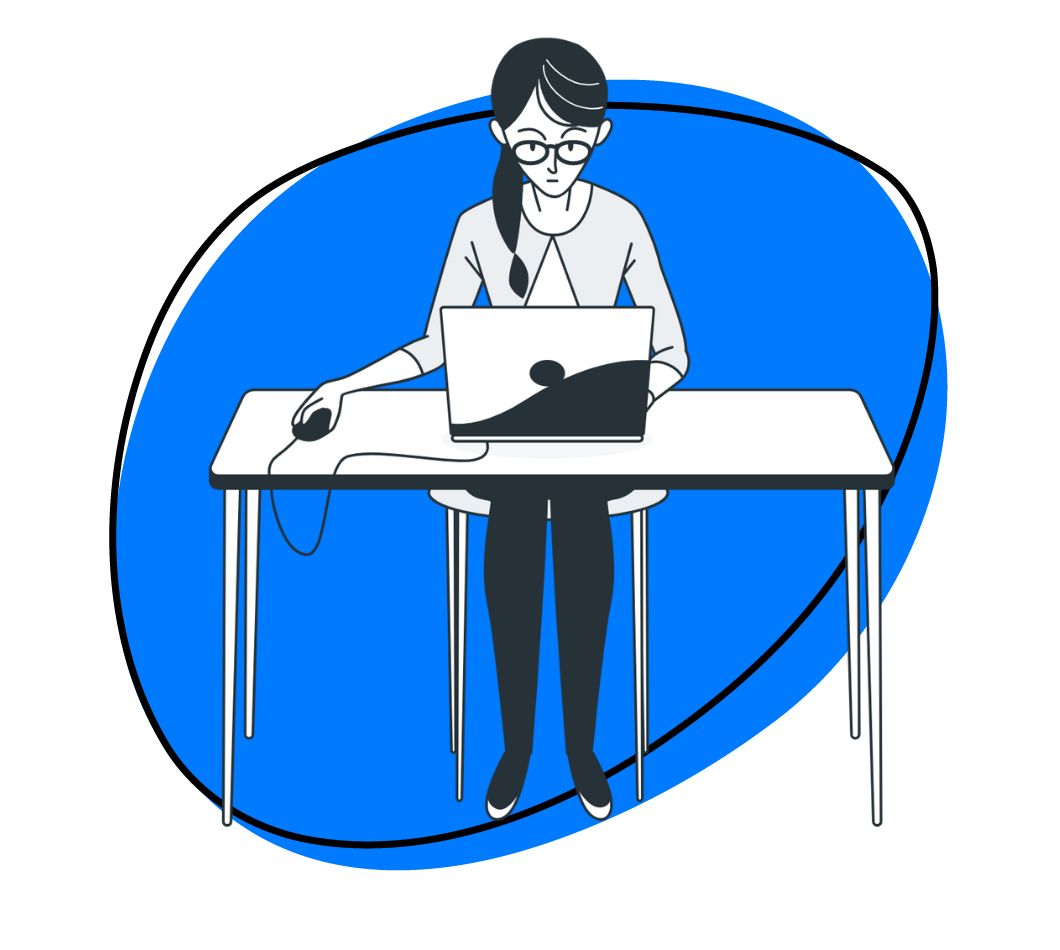Consumers construct their expectations based on their price for your products, customer reviews and feedback, and their previous interactions with other brands. But customer expectations are never stagnant. They change over time based on the goals and needs of the hour. Different situations will call for different actions, and your customer support team must be ready to adapt to the situation.
There are two types of expectations that consumers have. First, they want to get maximum value from the product or service they’re paying for. They don’t want to pay for faulty products that bring more trouble than easing their lives. Second, customers want a humility-filled and welcoming relationship with your brand. Consumers are bound to reach out or call the companies they’re buying from, and they want maximum attention and expect their issues to be resolved during the first call. A customer service agent who will attend to the customer needs must meet these expectations to make your brand succeed.
Often, customers talk about their interaction with service providers and their purchases. A cycle of marketing goes on in these social circles. By default, if your services or products meet the consumer’s expectations, they’ll be discussed in these circles, resulting in more sales and prospects for your company.
Thus, it’s clear that meeting customer expectations and setting the right expectations is essential. But how do you do that? This article will discuss five proven ways to help you manage your customers’ expectations and deliver an expectational customer experience.

What Customers Need From Businesses
Ultimately, each customer’s needs fall into two primary categories: physical and psychological needs.
- Physical needs: The quality of your services and products is closely linked to your customers’ physical needs in the business world. For instance, a restaurant guest is hungry and tired, so they need an espresso and a scone. Or, a customer is cold in the winter weather, and they visit your online store because they need a puffer jacket and a pair of mittens. You can map these behaviors into specific physical needs. They’re interlinked with more complex psychological needs, such as a feeling of belonging or an affinity to a particular brand.
- Psychological needs: Psychological needs come into play, mainly when there’s an emotional reason behind a customer’s purchase. After the basic needs are met, the reasons behind a customer’s purchase become emotional. For example, any pair of jeans may fulfill a physical need for clothing, but customers may prefer a brand that donates a pair for each purchase.
Psychological needs are a significant factor when it comes to brand loyalty. According to Zendesk, 74% of consumers are loyal to a particular brand, and 52% of loyal customers say they would go out of their way to shop with favorite companies. Understanding the relationship between managing customer expectations and brand loyalty is crucial. Customer loyalty is tied to consumers’ ongoing choice to do business with a specific brand, refer their friends, family, and colleagues to you, and have a positive relationship with your brand. Excellent customer experience drives business growth and success in today’s competitive economy.
According to Ben Motteram, most consumers have a set of 7 basic needs, including empathy, friendliness, control, fairness, information, time, and alternatives, when they interact with a brand.
1. Transparency and Information
According to Shep Hyken, customers love honesty because it builds trust, credibility, and, sometimes, empathy. Thus, customers expect honest communication. But, unfortunately, most companies lose prospective customers because they don’t execute transparency in their marketing initiatives.
Being honest is significant not only for consumers but also for your company. That’s because the more transparent you’re, the more consumers will trust your brand, reducing customer churn rates and ultimately improving your retention rates.
Besides attracting new customers, transparency enables you to serve your existing customers better, ensuring they continue doing business with you. Here’s how transparency can help you scale your business:
- Build a successful brand. Being honest with your customers about your products, terms, and conditions, and prices can set your brand up for success. Prospective customers respond well to transparent communication about what you can and can’t do for them.
- Improve your brand value. Being more open can increase your company’s efficiency. When you spend more time helping your customers and embellishing your results, you’ll save a lot of time to handle productive tasks.
- Build customer trust and loyalty. Being transparent helps you build trust with your customers, which is invaluable. Honesty is a fundamental way of creating customer trust because it eliminates any anxieties or suspicions your customers may have about the value of your products or services.
2. Building Loyalty by Managing Expectations
Consumers consistently demand higher levels of customer support. But, unfortunately, such customer support expectations ultimately influence their level of satisfaction, leaving companies with a tricky question: how can they possibly meet their customers’ needs while staying ahead of their competitors? The answer is by focusing on building customer loyalty and trust.
Loyalty is crucial for managing and exceeding customer expectations with each purchase. But to manage customer expectations with loyalty, it’s essential to understand the types of consumer expectations and what they mean to customer retention and reward marketing.
Loyal customers can positively affect your brand by referring you to their family and friends with good word-of-mouth marketing. When consumers are satisfied, they become loyal to your brand, increasing their lifetime value to your company.
3. Gather Customer Feedback
A study by HubSpot reports that 42% of brands don’t gather customer feedback or survey their customers. Ultimately, these brands don’t understand their customers’ expectations. Consumer feedback is critical for all companies to get an honest picture of their performance and offer better products and services.
Once you understand what customers expect from you, adding those features to your products is more effortless. Also, it becomes easier to retain new customers because they won’t need to go elsewhere. After all, you’re offering what they expect from you.
Customer feedback also helps to evaluate customer satisfaction. There’s a close relationship between business performance and customer satisfaction. So, you must ensure your customers are happy with your services and products.
Typically, the best way to determine if you meet their expectations is to collect their feedback. By leveraging NPS and CSAT surveys and customer reviews, you can quickly evaluate the satisfaction level and ultimately predict your brand’s financial condition in the future.
4. Manage Your Customers’ Expectations by Going the Extra Mile
Strive to do more than your customers expect, and go above the norm to meet their expectations. Exceptional customer service is also a fundamental attribute that most consumers value more than the quality or price of the product.
Here are some ways you can make your customers feel valued by going the extra mile:
- Try to know who your customers are and identify their goals and needs. Consumers love the personalized attention you give them.
- Act on the feedback you gathered from customers and offer better services or products that align with their expectations.
- Offer discounts and promotional offers with their purchase.
Going the extra mile will result in happier customers. Also, it’ll help your business keep growing and remain on the radar for future business opportunities.
5. Leverage Social Media to Manage Customer Expectations
Companies that don’t respond to social media messages experience a 15% decline in customer churn rates. Today, social media is one of the most preferred channels by consumers for instant support.
To manage customer expectations, practice social listening to track social media conversations related to your company. By actively listening to those conversations, you’ll understand your customers’ expectations and behaviors. This will enable you to build lasting relationships with them. Also, it encourages consumers to spend more on your brand because they feel valued and appreciated. As a result, your business ultimately gains a competitive advantage in the marketplace, making it stand out from the competition.
By practicing social listening, you’ll understand customer support psychology, which helps you gain an in-depth understanding of your customers’ needs and wants. Knowing customer needs and wants empowers you to deliver an outstanding customer experience, ultimately improving customer satisfaction and trust.
Bonus Tips: Enhancing Your Approach to Managing Customer Expectations
- Personalization at Every TouchpointTailor your communications and offerings based on individual customer data. Personalization shows customers that you value them as individuals and understand their unique needs and preferences. Use data analytics to create targeted marketing campaigns, recommend products, and send personalized messages on birthdays or anniversaries.
- Proactive Customer ServiceAnticipate customer needs and address potential issues before they escalate. Implement systems to monitor product usage and identify when customers might require assistance. Proactively reach out with solutions or helpful tips, demonstrating that you are committed to their satisfaction and success.
- Empower Your Customer Support TeamEquip your support team with the necessary tools, training, and authority to resolve customer issues swiftly. Empowered employees can make decisions that benefit the customer without needing multiple approvals, leading to quicker resolution times and increased customer satisfaction.
- Consistency Across All ChannelsEnsure that your brand message, customer service, and product quality are consistent across all touchpoints, whether online, in-store, or via customer support. Consistency builds trust and helps customers know what to expect every time they interact with your brand.
- Show AppreciationRegularly show appreciation for your customers’ loyalty. This can be through exclusive discounts, loyalty programs, personalized thank-you notes, or special events. Feeling appreciated encourages customers to continue doing business with you and promotes positive word-of-mouth.
- Transparent Policies and CommunicationClearly communicate your policies on returns, refunds, shipping, and handling times. Being upfront about potential delays or changes builds trust and helps manage customer expectations effectively. Transparency can prevent misunderstandings and dissatisfaction.
- Offer Self-Service OptionsProvide customers with the tools they need to find answers and resolve issues on their own. A comprehensive FAQ section, detailed product guides, and video tutorials can empower customers to troubleshoot problems without needing to contact support.
- Continuous ImprovementRegularly review and update your customer service strategies based on feedback and performance metrics. Stay informed about industry trends and emerging technologies that can enhance the customer experience. Demonstrating a commitment to continuous improvement shows customers that you are dedicated to providing the best possible service.
By integrating these bonus tips into your customer service strategy, you can create a more robust and responsive approach to managing and exceeding customer expectations, ultimately leading to increased loyalty and business success.

How can I use Zight to manage customer expectations?
Using Zight (formerly CloudApp) to manage customer expectations can significantly enhance your customer service experience. Here are several ways you can leverage Zight’s features to meet and exceed customer expectations:
1. Efficient Communication with Visuals
Annotated Screenshots and GIFs:
- Use Zight to capture and annotate screenshots and GIFs to visually explain complex issues or solutions. This reduces ambiguity and helps customers understand the information quickly.
Example:
- A customer is confused about a feature in your software. Instead of a lengthy email, send an annotated screenshot highlighting the steps they need to follow.
2. Personalized Video Responses
Record Personalized Video Messages:
- Address customer queries with personalized video responses. This adds a personal touch and shows customers that you value their time and effort.
Example:
- A customer has a specific question about using your product. Record a quick video walkthrough addressing their query directly, making the interaction more personal and engaging.
3. Proactive Support with Tutorials
Create and Share Tutorials:
- Use Zight to create and share detailed video tutorials and how-to guides. These resources can be shared proactively to help customers get the most out of your products or services.
Example:
- A new customer is onboarded to your platform. Send them a welcome email with links to video tutorials covering the most important features and initial setup steps.
4. Quick Problem Resolution
Visual Bug Reporting:
- When customers report bugs or issues, they can use Zight to capture and share visual proof of the problem. This helps your support team understand and resolve issues faster.
Example:
- A customer encounters an error while using your app. They capture a screen recording of the issue and share it with your support team, enabling quicker diagnosis and resolution.
5. Transparent and Honest Communication
Show, Don’t Just Tell:
- Use Zight to show customers what is happening behind the scenes. If there’s a delay or an issue, create a video explaining the situation and the steps being taken to resolve it.
Example:
- There’s a delay in product shipment. Send a video explaining the reason for the delay and what you are doing to ensure it doesn’t happen again, reinforcing transparency and trust.
6. Enhanced Training and Onboarding
Interactive Training Sessions:
- Leverage Zight to create interactive training sessions for new customers or employees. This ensures they understand your product thoroughly and can use it effectively.
Example:
- Onboard a new team of customer service agents with a series of training videos covering common customer issues and how to resolve them using Zight.
7. Feedback Collection and Response
Video Feedback Requests:
- Request customer feedback through personalized video messages. This makes the feedback process more engaging and can lead to more insightful responses.
Example:
- After resolving a customer’s issue, send a video message thanking them for their patience and asking for their feedback on the service they received.
8. Knowledge Base Enhancement
Build a Visual Knowledge Base:
- Populate your knowledge base with visual content created using Zight. Include annotated screenshots, GIFs, and video tutorials to make the knowledge base more user-friendly.
Example:
- Convert text-heavy FAQ sections into visually rich content, making it easier for customers to find and understand the information they need.
By integrating Zight into your customer service operations, you can enhance communication, provide clear and engaging support, and build stronger relationships with your customers. This proactive and transparent approach helps in effectively managing customer expectations and improving overall satisfaction.
Final Thoughts
Customer expectations have a significant impact on every brand. They apply across the entire company on their own. Being customer-centric is the most effective way to manage customer expectations. Once you identify and understand what your target customers expect, meeting and exceeding their expectations becomes easier.
You can also leverage customer support tools, such as Zight (formerly CloudApp), to manage your customers’ expectations. For instance, Buffer’s customer service team saves nearly 24 hours per week while handling customer frustrations. First, the team ensures they fully understand customers’ questions by recording their screen with audio to ask customers what causes their problem. By allowing customers to give swift and easy answers, Buffer’s customer service team reduces response times. Also, the team sends annotated screenshots and HD videos to customers to answer their questions and for instructional purposes.












